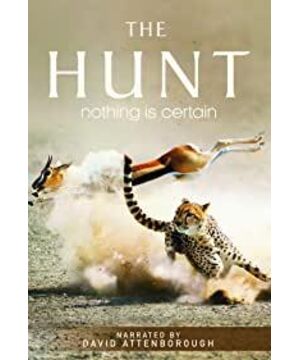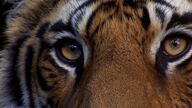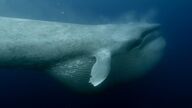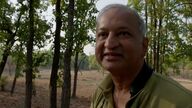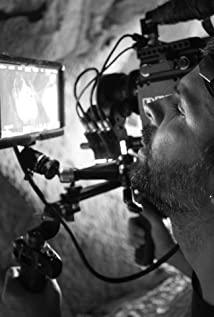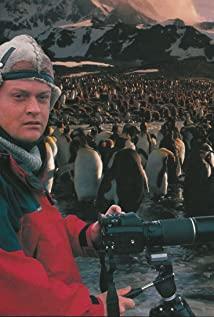Watched the show twice in three days off. Watch it yourself first, and then watch it again with your daughter.
The two hunting scenes with multiple reversals and the most ups and downs, leopard hunting antelope and wild dog hunting wildebeest, were placed at the beginning of the first episode. There are probably very few audiences who are not excited after watching these two plays. The entire episode is about the hardships of the hunter. Thinking that most animals are in the harsh competitive environment of life and death, I suddenly feel that human beings are too arrogant and extravagant. However, on second thought, human beings (at least me) also have a super hard life. When it comes to survival skills, humans go far beyond other animals. Not only do we need to try after failure, but we also need to try again and again.
There are so few polar hunters that the second episode is the most coherent, and the protagonist is unmistakably polar bears. The most shocking scene is the bony polar bear standing on the broken ice, the most surprising is the polar bear digging for eggs from a hundred meters above, and the most hilarious is trying to ambush the seal through the ice cave, but lost his way. The bear that swims farther and farther.
Tiger is of course also very good, but as a veteran star, it does not sell as well as the horned eagle in the third episode. The main reason is that the monkeys and sloths who play the role of the horned eagle are too powerful, and it is not too much to describe them as full of drama. The monkey's claws appeared twice in this episode, in the mouths of the horned eagle and the chimpanzee, giving people a sense of terror.
The fourth episode is generally considered to be the most shocking episode, probably because the sea is too unfamiliar and mysterious to humans. If the ocean is turned over according to the human world view, the surface of the ocean will be like the ground; heading towards the deep ocean is equivalent to ascending into the endless void. Krill or sardines come to the surface to feed, like a flock of birds landing on the ground, with both opportunity and danger. But the life of terrestrial creatures is much more peaceful than that of sea creatures. After all, we have never seen a scene where tens of thousands of birds are slaughtered by eagles, snakes, wolves, foxes, tigers and dragons.
Episode 5 feels fairly traditional, with cheetahs and lions, the African savannah, the most common subject and setting for wildlife documentaries since the days of Animal World. Even so, this episode also dug out new material from old themes. When the blood-soaked bison stood up and stumbled away, the audience was probably as shocked as the lion.
The shooting environment of the sixth episode is the most complicated, and the behavior of the hunters is correspondingly complicated. The macaques reach into the salty waters, and the dolphins arch their bodies into the muddy tidal flats, all adapting to survive. Small South American sea otters and land-walking octopuses have flexibility written into their genes, but no animal is as flexible as humans. Is this our luck, the misfortune of other species? Or can it be used to benefit the entire ecology?
The final episode is about the efforts of wildlife scientists to protect the living environment of top hunters. The hunters mentioned are tigers, lions, cheetahs, blue whales, horned eagles and polar bears, most of which can be regarded as cornerstone species in their environment. However, they all need to rely on the goodwill of human beings, the cornerstone of the earth, to survive. I have some confidence in this kindness, despite the fact that environmental pressures are there. After all, humans are one of the very few species in the world that has compassion for aliens. If we watch this film and can feel moved and reflect on ourselves, at least the most basic purpose of the producer has been achieved.
PS: The ten-minute shooting footage after each episode is also very worth watching. Such a film is the crystallization of the most cutting-edge photography technology, but the focus of the tidbits is not the technology but the people. With such people, cutting-edge equipment can only be put to good use by handing them over. For the contemporary Chinese who consider themselves wealthy and rising, this is often overlooked, and therefore it is especially worth reflecting on.
View more about The Hunt reviews


